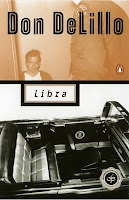As the segmentation of popular musical tastes continues on into the 21st century few bands have won as much acclaim and respect than
Wilco. Despite receiving no airplay on mainstream radio their album sales have increased with each album. Jeff Tweedy, the founder and chief songwriter for Wilco, is often mentioned among the likes of Bob Dylan and Neil Young. Greg Kot, music critic for the
Chicago Tribune, wrote
Wilco: Learning How to Die, an account the band at a tumultuous time in their history.
Learning How to Die is a fine book on the current state of the record business and a revealing portrait of Tweedy.
The story of Wilco begins in Bellville, Ill, a town in the middle of the Midwest. In the 1980s High school buddies Jay Farrar and Jeff Tweedy forged a friendship based on their love of music. Both grew up in the harsh economic realities that plagued the Midwest in 1980s (and persist into the present) and saw music as a way out. Together they formed
Uncle Tupelo in 1987 and developed a sound that blended elements of punk, country, and folk. Their 1990 debut album,
No Depression, was a collection of ragged tracks that created its own genre of "alt-country."
Uncle Tupelo came to prominence in the underground rock scene of the early 1990s, an era remembered for the "grunge" sound from Seattle. Unlike
Nirvana, who's themes revolved around teen angst and outrage at corporate America,
Uncle Tupelo wrote honest commentaries on the realities of American life. Their second LP,
Still Feel Gone, dwelt on these themes in a more coherent set of songs. Tracks like "Gun" and "Looking for a Way Out" captured the banality and emptiness of rural life - minus the romanticism of Bruce Springsteen and more in tone with Sherwood Anderson's novel
Winesburg, Ohio. Their next album,
March 16-20 1992, was a set of acoustic tracks produced by REM guitarist Peter Buck, in an even deeper examination of American roots music. Kot goes into detail on the creative and personal tensions that befell Tweedy and Farrar during the making of their final album
Anodyne (1993) when both began to write their songs separately.
 |
| Jay Bennett and Jeff Tweedy |
In 1994, Farrar dissolved
Uncle Tupelo and Tweedy formed
Wilco. Their first album,
A.M., was a swiftly recorded set of twangy rock tunes that received a mixed reaction. With no chance of getting played on the radio, the band toured incessantly and gradually built a fan base. The addition of multi-instrumentalist Jay Bennett gave Tweedy a new collaborator with whom he wrote some of his best songs.
Wilco's second LP,
Being There, marked a creative breakthrough, a double album that celebrated 1970s classic rock.
An ongoing theme in the book is personal travails of Tweedy as a suffering artist torn between domestic and career obligations. After
Being There,
Wilco embarked on grueling tours that left Tweedy psychologically drained and plagued with migraine headaches. Long absences from his family also took its toll - along with the usual travails of the road. During concerts, he took on a new persona, getting confrontational with audiences that didn't take to the music. Band members grew nervous about Tweedy's increasingly unpredictable behavior onstage. In 1998,
Wilco was asked by British folk rock artist Billy Bragg to contribute music for unpublished Woody Guthrie songs. These recordings resulted in two albums
Mermaid Avenue (1998) and the follow up
Mermaid Avenue. II were well received despite recurring conflicts with Bragg.
The release of
Summerteeth (1999) and
Yankee Hotel Foxtrot (2002) marked new artistic heights for Wilco in the midst of conflicts with their record company and painful personnel changes.
Summerteeth was a pure pop album with some of the most haunting lyrics in recent memory. Tweedy, worried the songs were too dark in the album's first cut, retreated to the studio with Bennett and added heavy overdubs. Disappointing sales led their label, Reprise, to demand a more "commercial" sounding album next time around.
The last part of the book revolves around the long recording history of
Yankee Hotel Foxtrot, an even more experimental effort than
Summerteeth. After Reprise rejected the album the band released songs on their website and it quickly generated a buzz. Meanwhile, Tweedy replaced drummer Ken Coomer with Glenn Kotche. After the album's completion Bennett was also dismissed (all of which is chronicled in the Sam Jones documentary
I am Trying to Break Your Heart) Kot is critical of Tweedy's less than diplomatic handling of these changes, but this all falls to the cliches of rock band politics. Eventually, the album was released on Nonesuch records and proved that music with substance could find an audience in an age dominated by five media companies. Despite all the turmoil,
Yankee Hotel Foxtrot is an amazing album. Although recorded before 9/11, the dark atmosphere of the album fit the country's mood. Tracks like "Jesus Ect"., "War on War," and "Ashes of American Flags" are filled with cryptic lyrics and a dark foreboding that hard times are ahead - with faint glimmers of hope
Fans of
Wilco will enjoy this book since the author is a real fan. Earlier, I mentioned this was an up close account in the best since of the term since it avoids going into cheap tabloid territory. It would've been nice to learn a little more about Tweedy's songwriting process and his literary influences. Also, Jay Farrar leaves the narrative far too soon, a figure just as compelling as Tweedy. For insights into the current state of the record business the book is first rate.
http://www.youtube.com/watch?v=5j2ykHinIPg&feature=related - Wilco performs "War on War" on Late Show with David Letterman















